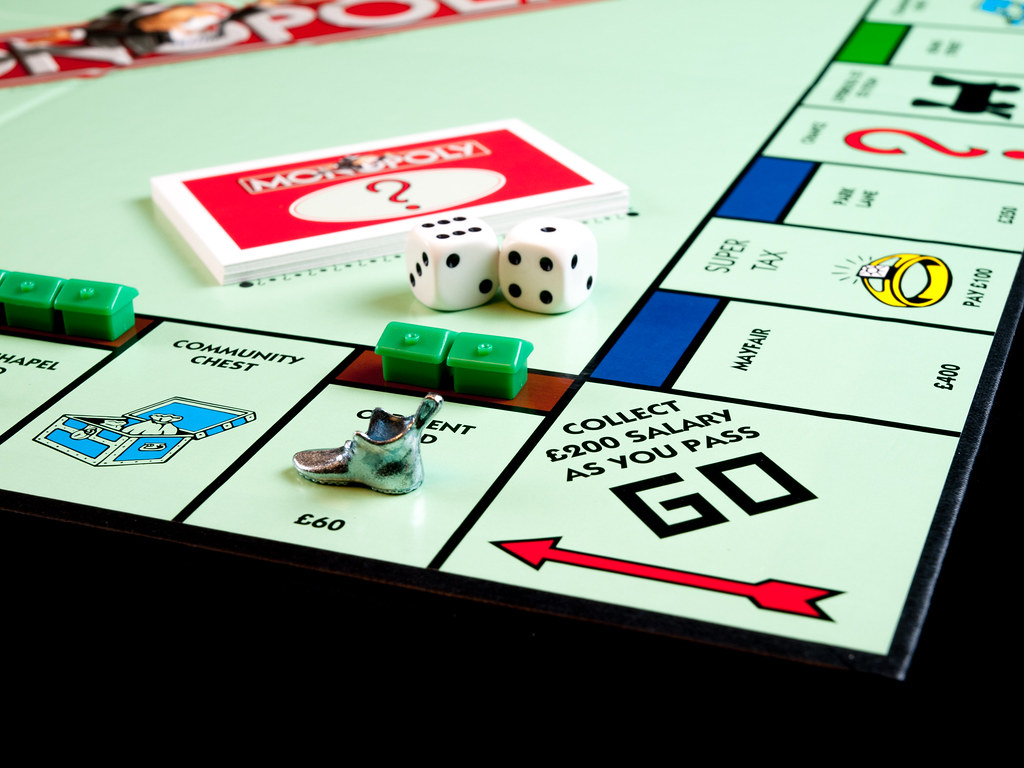 As a team we decided to base our board game design on the Star Wars Battlefront IP. With this in mind we set out to research board games that had elements of military warfare. The first of said board games was A Game of Thrones: Second Edition. Once the board was layed out on the table and all of the games components were organised in front of us, we read through the rules and attempted to decipher how this game should be played. Two hours passed as we tried to clarify what each component was for, how the game should be set up and what actions are allowed to be taken on each turn. At this point everybody began to feel a little overwhelmed and agitated.
As a team we decided to base our board game design on the Star Wars Battlefront IP. With this in mind we set out to research board games that had elements of military warfare. The first of said board games was A Game of Thrones: Second Edition. Once the board was layed out on the table and all of the games components were organised in front of us, we read through the rules and attempted to decipher how this game should be played. Two hours passed as we tried to clarify what each component was for, how the game should be set up and what actions are allowed to be taken on each turn. At this point everybody began to feel a little overwhelmed and agitated. By a group suggestion we set up the board as portrayed in the instructions and began to play through the game, in an attempt to learn as we went along. This first game was a bit of a struggle to get through, towards the end we all had an idea of what we were supposed to be doing.
By a group suggestion we set up the board as portrayed in the instructions and began to play through the game, in an attempt to learn as we went along. This first game was a bit of a struggle to get through, towards the end we all had an idea of what we were supposed to be doing. Deciding to play a second game in order to get our heads around the mechanics of the game more fluently. At this point we all began to feel a little more at ease with the game, as we began to form alliances and plan out our movements with much more confidence than the first game.
Deciding to play a second game in order to get our heads around the mechanics of the game more fluently. At this point we all began to feel a little more at ease with the game, as we began to form alliances and plan out our movements with much more confidence than the first game.Towards the end of the second game we had gained ideas from this games mechanics that we might want to incorporate in our own game design. The tokens for example were a good way of keeping track of player progress. Unit attack and defense stats were a known constant throughout the game, giving the players a clear idea of how to proceed in combat. Cards are also used in the game to decide the outcomes of conflict or to add an interesting constraint at the beginning of a turn.
In conclusion this board game was intriguing and did turn out to be an enjoyable experience however the sheer number of rules and components made it a daunting task to even start playing the game. As a group we decided that it is better to have simple rules in our game, ones which are easy to understand and do not overwhelm the intended audience. Certain elements of this board game, such as the cards and tokens, were a great way of moving the game forward and giving the players a sense of achievement. Deciding as a group that these are elements we would like to integrate into our own design for the board game.
The online version of Civilization 4 uses hexagonal sections to designate areas for troop movements and player conquests. We found this to be a better solution than the square sections of a chess board, giving the player more movement options. There could also be designated areas in which a player could take control, illustrated by thicker lines around a group of hexagon spaces.

In another board game called monopoly, players can 'conquer' zones by placing houses upon them, these houses can then be traded for hotels in order to increase the advantage that this zone gives said player. This mechanic game me an idea for our own board game, capturing a designated zone with a certain amount of units could allow you to summon a more powerful unit and strengthen said players hold on that zone. In keeping with the Star Wars theme, this unit could be a turret of some kind which had more fire power than other units.
Once all of this information was taken into account, we then began to read through the mechanics that we had selected from the research. Decisions were then made as to which mechanics we should keep and which should not be used. After this stage of the development process we could then begin to for a draft rule book for our board game. Thank you for reading and have a good one!
--------------------------------------------------------------------------------------------------------------------------
Bibliography
Civilization 4 (no date) Available at: http://vignette3.wikia.nocookie.net/civilization/images/e/e0/Final_Siamese_city_going_down_%28Civ5%29.jpg/revision/latest?cb=20101229203523 (Accessed: 6 December 2015).
How to make your own board game (no date) Available at: http://www.wikihow.com/Make-Your-Own-Board-Game (Accessed: 10 November 2015).
Rebel Aliance (no date) Available at: http://static.comicvine.com/uploads/original/14/145389/3452694-7162735355-Star-.jpg (Accessed: 19 November 2015).
Scout Troopers battle of Endor (no date) Available at: http://www.etsy.com/shop/TheRetroInc?section_id=15011419&ref=shopsection_leftnav_7 (Accessed: 20 November 2015).
Star Wars: Imperial assault (no date) Available at: https://boardgamegeek.com/image/2247647/star-wars-imperial-assault (Accessed: 20 November 2015).
No comments:
Post a Comment